Heat Pipe ‐vs‐ U‐Pipe Solar Collectors
- iwsolar
- April 12, 2025
- 8:26 am

Understanding Heat Pipe and U-Pipe Solar Collectors: Working Principles and Key Differences
In the world of solar energy, evacuated tube collectors are widely used to harness solar heat for a variety of applications, from heating water to generating energy for homes and businesses. Among the various types of evacuated tube solar collectors, two of the most commonly discussed are Heat Pipe Collectors and U-Pipe Collectors. While both systems serve the same fundamental purpose—converting solar energy into heat—their working principles and the advantages and disadvantages they offer vary significantly. In this article, we will explore the working principles of each system and compare their key features.
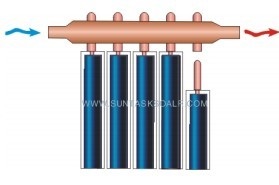
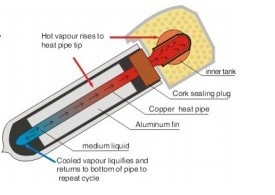
1. Working Principle
Heat Pipe Solar Collector
A Heat Pipe Solar Collector consists of several key components, including the vacuum tube, heat pipe, aluminum fins, and the manifold. Here’s how it works:
Vacuum Tube: The vacuum tube is the outermost layer that acts as a protective shield, trapping heat from the sun and preventing heat loss. It is designed to absorb solar radiation and convert it into heat.
Heat Pipe: The heat pipe is a sealed tube containing a liquid that evaporates when it absorbs the heat from the vacuum tube. The liquid inside the heat pipe evaporates into a vapor as it is heated by the sun’s energy.
Condenser and Heat Exchanger: The vapor rises to the condenser, where it gives off its heat to the surrounding medium—typically water or anti-freeze fluid—through a heat exchanger. As the vapor loses its heat, it condenses back into a liquid and flows back down to the base of the heat pipe.
This cycle of evaporation and condensation is a continuous process, as long as the collector is exposed to sunlight. The heat transferred to the fluid within the heat exchanger is then transported to a storage tank for later use.
U-Pipe Solar Collector
In contrast, a U-Pipe Solar Collector works a bit differently, though it also utilizes evacuated tubes to capture solar energy. The system includes:
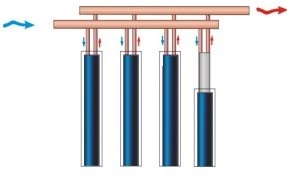
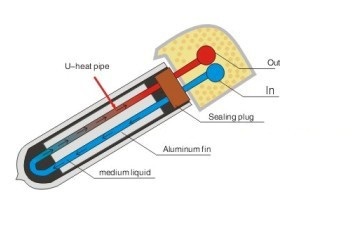
Evacuated Tubes: As in the Heat Pipe system, the evacuated tubes in the U-Pipe system absorb solar radiation and convert it into heat.
Aluminum Fins: The heat from the evacuated tube is transferred to aluminum fins that are connected to the U-shaped pipe. The aluminum fins have high thermal conductivity, which allows them to efficiently transfer the absorbed solar heat to the fluid inside the U-pipe.
U-Pipe: The U-pipe is a direct-flow component where heat is transferred to the fluid inside. Typically, the fluid used is an anti-freeze solution or water. The heated fluid flows through the U-pipe and directly transmits the thermal energy to a storage tank or heat exchange system. In some designs, the U-pipe may feed into a copper coil that serves as the heat exchange mechanism within the tank.
This system relies on the direct transfer of heat from the aluminum fins to the liquid within the U-pipe, without the intermediary of a heat pipe or condenser, making the process more straightforward.
.
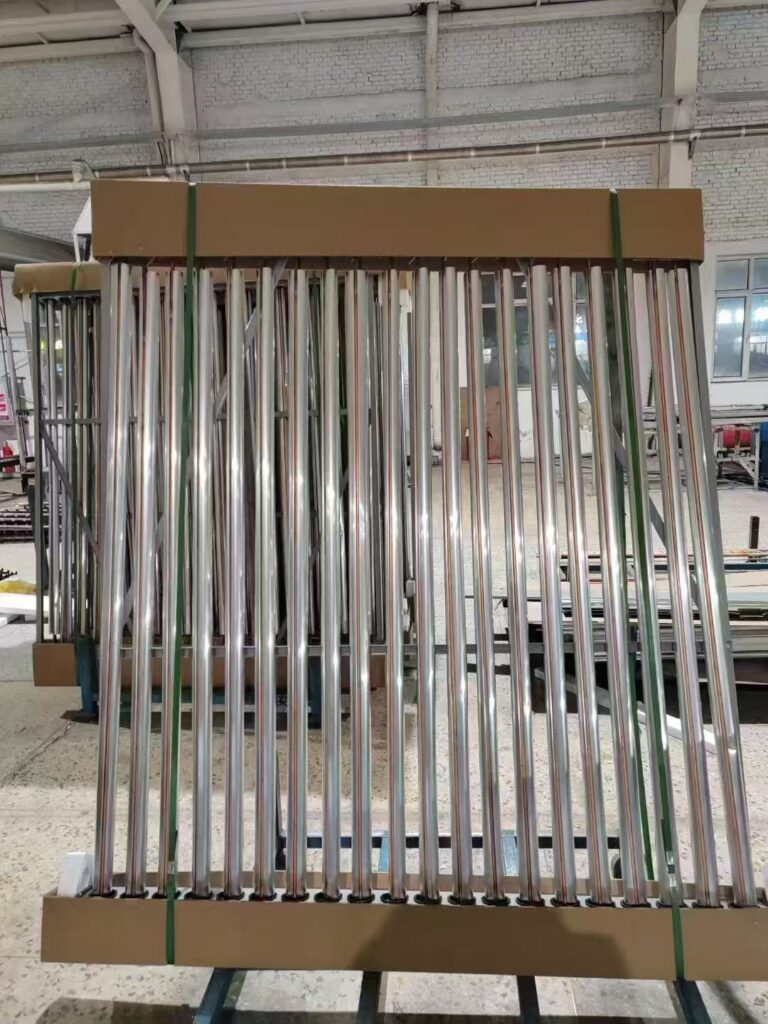
2. Key Differences and Comparison
While both systems are effective at capturing and transferring solar heat, there are several important differences that can influence your choice depending on your needs. Below, we will compare the Heat Pipe Solar Collector with the U-Pipe Solar Collector based on their installation flexibility, efficiency, and maintenance considerations.
Flexibility in Installation
One of the significant advantages of U-Pipe Solar Collectors is their versatility in installation. These collectors can be mounted either vertically or horizontally, providing more flexibility when designing your solar energy system. This flexibility allows homeowners and businesses to install the system in a variety of configurations, depending on available space and desired aesthetic. Additionally, U-pipe systems can be mounted flat on the wall, making them a good option for homeowners with limited roof space.
On the other hand, Heat Pipe Solar Collectors generally require a more rigid installation setup. While they can be mounted in some configurations, they are less flexible than the U-pipe systems. The heat pipes need to be positioned in specific orientations to optimize the flow of heat from the pipes to the manifold, limiting some of the design options for installation.
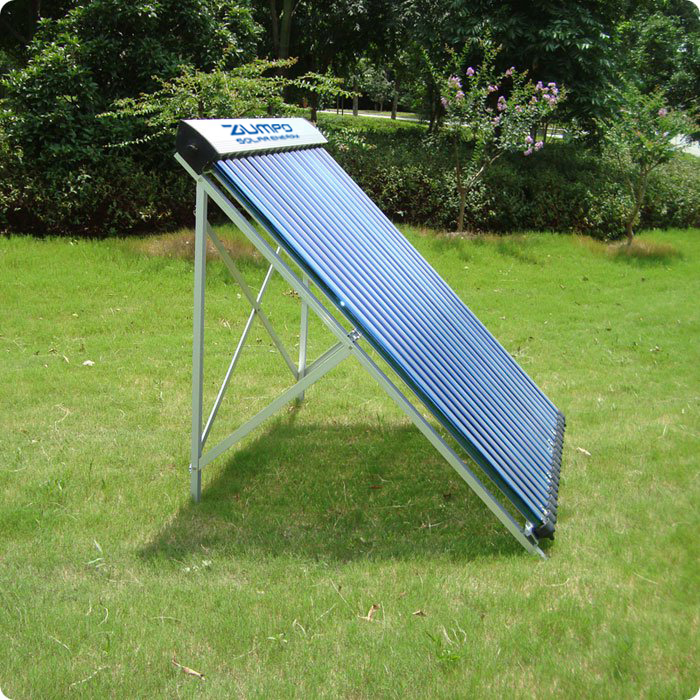
Efficiency
In terms of efficiency, U-Pipe Solar Collectors have an edge over their Heat Pipe counterparts. This is because the U-pipe system is a direct-flow type of collector. The thermal energy absorbed by the evacuated tubes is directly transferred to the liquid within the U-pipe, reducing any intermediate steps. As a result, U-pipe collectors can offer higher thermal efficiency since there is minimal heat loss during the transfer process.
In contrast, Heat Pipe Solar Collectors rely on an indirect transfer process. The heat must first travel through the heat pipe and then into the heat exchanger, which adds additional stages where heat can potentially be lost. While heat pipe systems are still very efficient, they generally cannot match the performance of U-pipe systems when it comes to direct heat transfer.
Maintenance and Repair Considerations
When it comes to maintenance, each system has its own set of pros and cons.
Heat Pipe Systems: One of the key benefits of heat pipe solar collectors is their modular design. If one of the heat pipes fails or is damaged, only that individual heat pipe needs to be replaced, not the entire collector. This makes the repair process relatively straightforward and cost-effective since you don’t need to replace the entire system.
U-Pipe Systems: On the other hand, U-pipe collectors come as a single, integrated unit. If one of the U-pipes becomes damaged, the entire collector must be replaced. While this may seem like a downside in terms of maintenance, it’s important to note that U-pipe systems are generally quite durable and designed to last for many years. However, the cost and inconvenience of having to replace the entire unit if damage occurs can be a drawback.
Conclusion: Which One is Right for You?
Both Heat Pipe and U-Pipe Solar Collectors have their advantages and disadvantages. If you prioritize installation flexibility and higher efficiency, and don’t mind replacing the entire unit if something goes wrong, a U-Pipe Solar Collector may be the better choice. Its direct-flow heat transfer system can deliver excellent performance, and its versatility in installation can be a significant benefit, especially for homes with limited space.
On the other hand, if you value modular design and the ability to replace individual components, a Heat Pipe Solar Collector might be a more practical option. Although it may not offer quite the same level of efficiency as the U-pipe system, its ability to replace faulty heat pipes individually could be a major advantage in the long run.
Ultimately, the best choice depends on your specific needs, budget, and the characteristics of your home or business. Both types of collectors are highly effective at harnessing solar energy, so you’re sure to benefit from whichever option you choose.
China OEM Solar Water Heater Manufacturer
You need more than just a supplier who can make the solar water heaters for you, and you need a reliable and professional partner to support together and grow your profits. Let iW Solar help you achieve business success.
